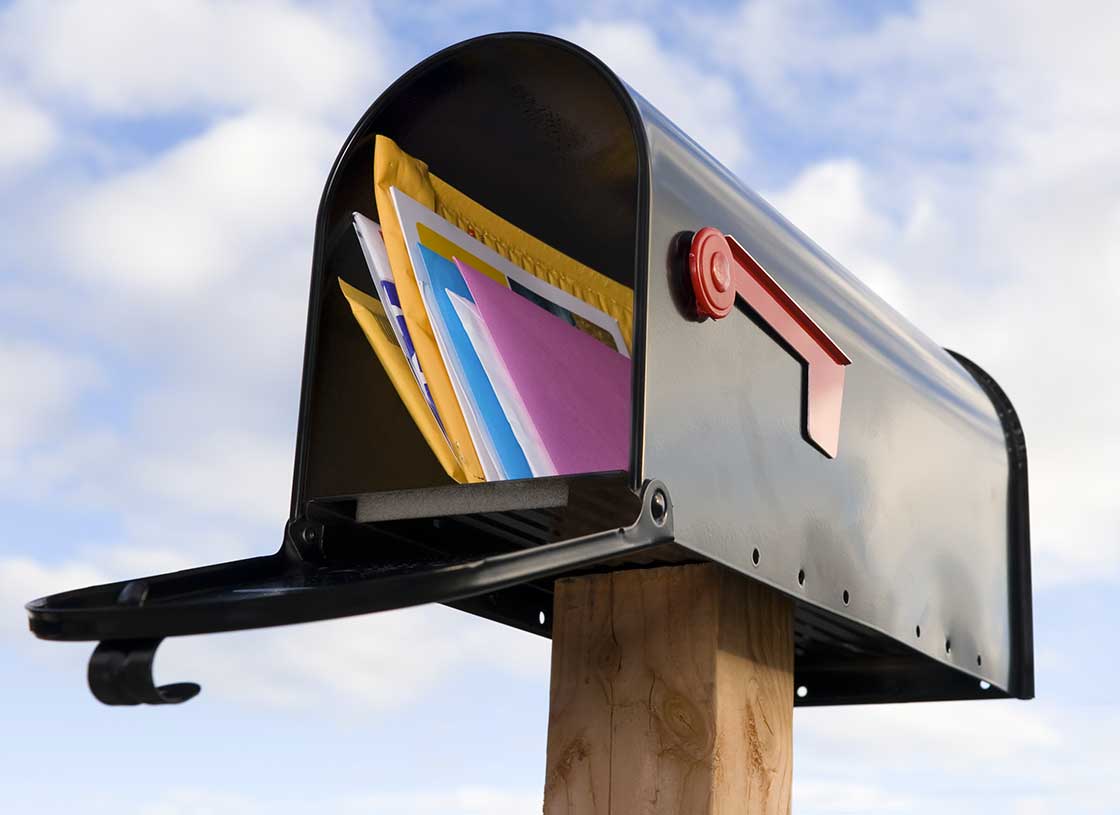There’s a natural instinct among marketers to compare Direct Mail to email, and there’s a lot about that comparison that’s fair. Both Direct Mail and email are targeted to databases and demographics, and both deliver messages directly to individuals (whether by name or by the far less warm-and-friendly “Current Homeowner”).
In this one-on-one comparison, email wins speed and cost. Direct Mail wins response. According to the Data & Marketing Association, Direct Mail generates a response rate of 5.1% compared to 0.6%, which is the average email response rate. (This is the highest response rate for Direct Mail since the organization began publishing these stats in 2003 – and this is happening as less mail shows up in the mailbox and your mailing stands out even more.)
In selecting your media mix and the percentages of your budget you’ll devote to each media, however, you will also line up Direct Mail advantages next to print publications, billboards, Social Media, TV, radio and every other tool vying for your precious marketing dollars.
In these comparisons, Direct Mail still has sizeable advantages in its results. In broader media, for example, your ad is situated among lots and lots of others. In print, it’s surrounded by other ads. In electronic media, you’ve got ads before you and after you, plus distracted listeners. In Social Media, you’ve got tons of competition vying for attention.
Not only that, in paid media, your space and time are limited to what you’ve purchased. And you’re coordinating your ad within the media’s schedule.
On the other hand, with Direct Mail, you’re still reaching individuals vs. large groups. When it’s one ad in one person’s hands, you get their full attention. Plus, you are the publisher, and you choose size, quantity, timing, recipients, everything. You’ve got control of what goes, when it goes, how it goes and who gets it.
In broader media, the cost to reach the wider audience may be less per impression, but the response results are also correspondingly lower. Ultimately, the same targetability, personalization and customization – where you reach the people you want to reach instead of thousands you don’t – gives Direct Mail a favorable nod in any head-to-head media comparison.
But you still always want to make the most of this important marketing investment. Successful Direct Mail strategies rely on:
Defining the purpose of the mailing. Is it to build your image, acquire new customers, sell to existing customers, retain current customer? For contractors, postcards are often used to build image or to promote service. Letters are often employed to generate leads for big-ticket replacements. Newsletters retain customers.
Decide your mailing format. Will you send Every Door Direct Mail (postcards sent to every household in selected neighborhoods) or Traditional Direct Mail (postcards or letters to a targeted list)? If the latter, what type of list?
Select your list. For acquisition and lead generation, you can choose from types of lists. Specialty lists are sent to targeted recipients. Cloned lists are for prospects similar to current customers. Custom lists are where you choose criteria. Plus, you have your own database for Customer Retention newsletters and other customer-specific communication.
Prepare your message. Create a strong offer and then create interest with a strong message that uses a sense of urgency. And don’t forget your call to action. Tell them how to respond (call, email, schedule an appointment) – and when (an offer without a deadline isn’t really an offer).
Send it out. Direct Mail has many moving parts. After creative and list selection, there’s printing, stuffing envelopes, postage, mailing. We’ll take care of that for you – easily and efficiently.

